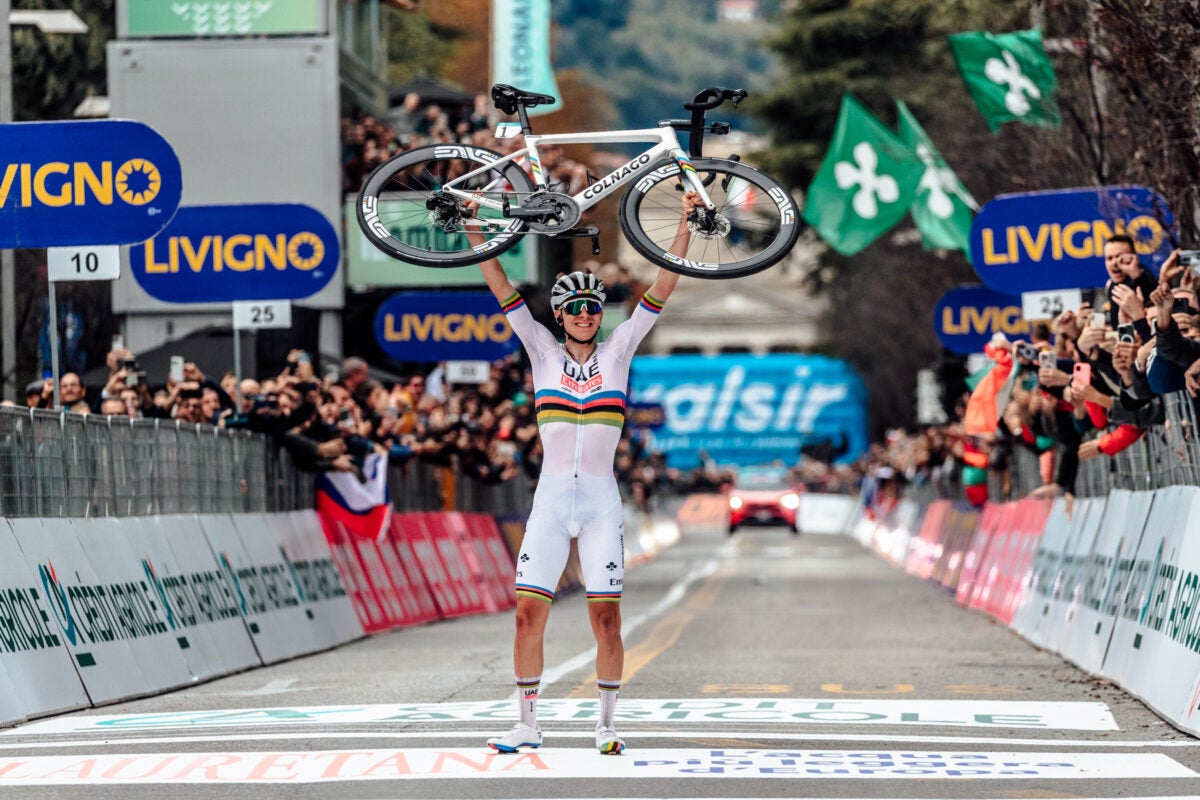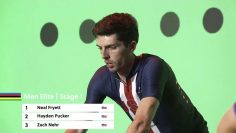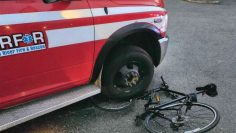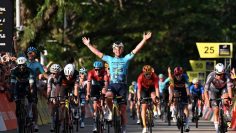“], “filter”: { “nextExceptions”: “img, blockquote, div”, “nextContainsExceptions”: “img, blockquote, a.btn, a.o-button”} }”>
Get a free Giordana cycling jersey when you subscribe to Velo with Outside+! It’s our way of celebrating the 2024 Road World Championships in Zurich. Includes free shipping. Hurry, ends Sept. 29.
>”,”name”:”in-content-cta”,”type”:”link”}}”>Join now.
Two weeks ago after the UCI Road World Championships, I wrote: “Tadej Pogačar is making our lives very difficult. How else can we describe an incredible solo victory once again? Pogačar goes solo on the final climb, Pogačar attacks from 50km out, and Pogačar wins…”
Now after Il Lombardia, we’re repeating the same lines.
We are running out of superlatives to use for the 26-year-old Road Race World Champion who has won the final monument of the season four times in a row. Pogačar crossed the line more than three minutes ahead of second place, Remco Evenepoel, and nearly five minutes clear of Giulio Ciccone, who finished third.
In the past month, the only thing that could stop Tadej Pogačar from winning a bike race was the weather — Tre Valli Varesine was canceled due to heavy rainfall and flooding. Coming into the final race of many riders’ seasons, the plan was to defeat Pogačar at Il Lombardia.
Twenty-three riders made their way into the breakaway of the day, including big-name riders like Matej Mohorič, Antonio Tiberi, Eddie Dunbar, Wilco Kelderman, Tiesj Benoot, Dani Martinez, and Thymen Arensman. The onus was on UAE Team Emirates now, who formed a serious chase with over 160 km to go.
The 255-kilometer route of the 118th Il Lombardia featured eight categorized climbs, including the decisive Colma di Sormano (13.1km at 8.3 percent) that topped out with 42km to go. All you need to know is that the first six climbs on the parcours were ridden at a ridiculous pace. With the breakaway up the road, UAE Team Emirates was chasing at a pace that would blow the doors off most amateur riders.

Sivakov – First six climbs of Il Lombardia
- Forcellino di Bianzano: 8:07 at 443w (6.4w/kg)
- Selvino: 23:33 at 404w (5.9w/kg)
- Colle di Berbenno: 11:26 at 415w (6w/kg)
- Valpiana: 25:20 at 397w (5.8w/kg)
- Sella di Onigo: 11:00 at 421w (6.1w/kg)
- Donna del Ghisallo: 14:23 at 393w (5.7w/kg)
At the base of the Sormano, the breakaway only held a minute lead as Adam Yates took over the pace-setting. Pavel Sivakov took over as the climb reached its steepest point, and Pogačar took off with 48.5km to go. No one responded to the Slovenian’s attack, and it was Evenepoel and Enric Mas who formed the first chase group. Lennert van Eetvelt came across to the pair, who crested the Sormano more than a minute behind Pogačar. Sivakov ate much more wind than Van Eetvelt and the other favorites while working for Pogačar, which explains why his average power is significantly higher.


Pogačar – Colma di Sormano: 30:18 at ~6.9w/kg
- Evenepoel: 31:24
- Van Eetvelt: 31:24 at 377w (6w/kg)
- Sivakov: 32:11 at 441w (6.4w/kg)
After witnessing so many attacks and solo wins, we’ve been able to build a solid physiological profile of Pogačar based on his 2024 performances. We know that he can do ~7w/kg for 40 minutes at the Tour de France and maintain 300-320w (~5w/kg) in Zone 2. His race weight was 65-65.5kg at the beginning of the 2024 season and 64-64.5kg at the Tour de France.
Putting this all together, we can see exactly what Pogačar is doing to win these races. On the Colma di Sormano, UAE Team Emirates set a pace of ~6.6w/kg until Pogačar attacked. This is the limit for every rider but Pogačar. That’s why no one responded to the world champion’s attack — they were already going as hard as they could.
When Pogačar attacked on the Colma di Sormano, he put 50 seconds into Evenepoel, Van Eetvelt, and Mas in 4.8 kilometers.
Pogačar’s attack on the Sormano: 6:02 at 440w at ~6.8w/kg
Max Power: 930w (~14.4w/kg)
The scary part is that Pogačar hardly slowed down on his way to the finish. With more than a minute to the nearest chaser and the gap still growing, Pogačar averaged nearly 50kph for 15km after descending the Sormano.

Pogačar pushing on the flat after the Sormano: 18:42 at 49.6 kph (30.8 mph)
With 8km to go, the San Fermo della Battaglia (2.8km at 6.6 percent) began. Despite his massive lead, Pogačar went up the climb at nearly 7w/kg. But for the world champion, this was only his Threshold pace.

Pogačar – San Fermo della Battaglia: 5:21 at ~7w/kg
- Van Eetvelt: 5:37 at 391w (6.3w/kg)
- Sivakov: 5:36 at 453w (6.6w/kg)
After more than six hours of racing, Pogačar cruised into the finish three minutes and 16 seconds ahead of Evenepoel and four minutes and 31 seconds ahead of Ciccone. With every solo victory, it becomes more difficult to describe Pogačar’s dominance. He has gone from the Giro-Tour double to dominating the world championships to entering the discussion for the greatest cyclist of all time.
Velon CC shared more of Pogačar’s power data after the race, including the final 48.4km solo effort. With a Zone 2 power of 300-320w, the winning move was well within Pogačar’s capabilities. All he needed to do was get some separation, and the race was over. During this effort, Pogačar pushed 6.5-7w/kg on the climbs and pedaled easily on the descents, making for a weighted average of 370w (5.7w/kg).
After witnessing seven months of Slovenian dominance, the professional peloton has a lot of work to do this off-season. I can see it written on the whiteboard at the teams’ December training camps:
“Nine a.m. Team Meeting: How to Stop Tadej Pogačar”
Power Analysis data courtesy of Strava
Strava sauce extension
Riders:








